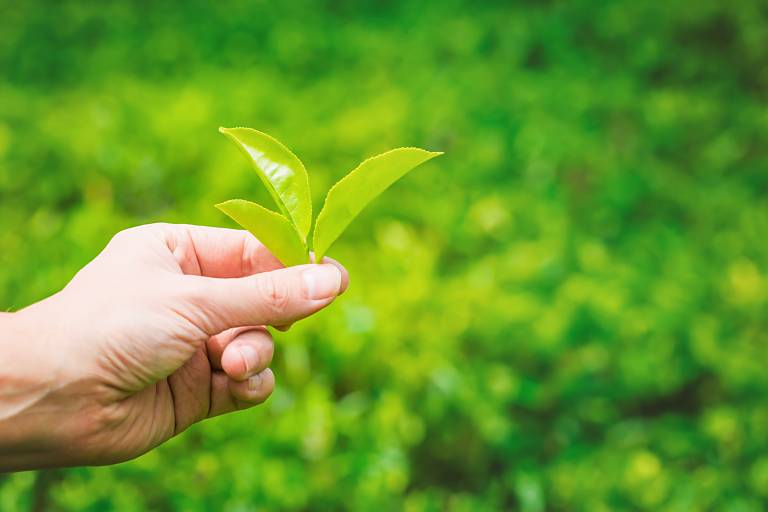Tips for identifying poor quality tea

Tea is one of the most popular drinks in the world, but not all tea is created equal. In fact, there is a huge difference in quality between different types of tea. Poor quality tea can be harsh, astringent, and full of bitterness, while high-quality tea is smooth, mellow, and full of flavor. So how can you tell the difference between good and bad quality tea? In this blog post, we’ll give you some tips on how to identify poor quality tea. We’ll also explain why it’s important to choose good quality tea, and what benefits you can expect from drinking it.
How To Identify Poor Quality Tea By Its Appearance
There are a few ways that you can identify whether or not a tea is of good quality. One way is to look at the tea leaves. If the leaf is broken, it is likely lower in quality. Additionally, if the tea leaves are dry and brittle, it is also likely lower in quality. Good quality tea will have a fresh grassy smell while poor quality tea may smell old or stale.
Another way to identify good vs bad quality tea is to steep the tea and pay attention to the color. Good quality tea will produce a bright color while poor quality teas may produce a duller color. Finally, when tasting the tea, be sure to taste its freshness and smoothness as well as its bitterness or astringent qualities.
How To Identify Poor Quality Tea By Its Aroma
When trying to identify poor quality tea, the most important factor is its aroma. A good quality tea will have a pleasant and strong aroma, while a poor quality tea will have a weak or unpleasant smell. Brew the tea and see how the leaves look after brewing- good quality tea will have leaves that are intact, while poor quality tea will have broken leaves. Finally, consider the grade of the tea- Grade 1 teas are the highest quality, while grade 2 teas are lower quality. However, size is also an important factor to consider when trying to identify poor quality tea. Good quality teas will have larger leaves, while poor quality tea will have smaller leaves.
How To Identify Poor Quality Tea By Its Brewing Process
When it comes to finding good quality tea, one of the most important factors is its brewing process. A tea’s quality can be identified by its manufacturing process, as well as its brewing process.
Poor-quality teas will have a weak aroma, light color and astringent taste. They will also have a shorter shelf life and may not taste as good as more expensive teas. In contrast, high-quality teas will have a strong aroma, dark color and full-bodied taste. They may also have a longer shelf life, but they are typically more expensive due to their higher quality.
Brewing your own tea is an easy way to ensure that you’re getting a high-quality product. By carefully selecting the type of tea, the water temperature and brewing time, you can create a cup of tea that tastes exactly the way you want it to.
Some common mistakes made when brewing tea are using too hot or cold water, overbrewing or underbrewing. By following these guidelines, you can make sure that your cup of tea is always perfect.
How To Identify Poor Quality Tea By Its Taste
When it comes to tea, the best way to determine if it is of good or poor quality is by tasting it. Aroma, color, and flavor can all be indicators of quality. Additionally, the size, shape, and pluck of the leaf can also affect taste. Processing methods such as drying and oxidation can also impact tea quality.
So how do you go about identifying bad tea? Start by tasting it! If you don’t like the taste then there’s a good chance that the tea is of poor quality. Once you’ve identified poor-quality tea by its taste, take a look at other factors such as aroma, color, and flavor to see if they match your expectations. Finally, consider processing methods to see if they have an impact on overall taste.
If you don’t like the taste of a tea, there’s a good chance that it is of poor quality. However, bad tasting tea doesn’t necessarily mean that it is of low quality. Poor-quality tea can have a bad flavor even if it smells and looks okay. Another way to identify poor-quality tea is by its processing methods. For example, if the tea has been dried too quickly or exposed to oxidation processes such as air drying, the tea will likely have a bad taste.
So how do you tell if a processed tea has been treated poorly? One way to determine this is by examining the smell and taste of the tea. If the smell and taste are off, then it’s probably safe to assume that the processing method was not done correctly (e.g., improperly dried). In addition, if you’re looking for an indicator of high-quality teas, look for teas with little oxidation or those that are lightly roasted rather than heavily roasted because these processing methods often result in better-tasting teas.
The Difference Between Good And Bad Quality Tea
When it comes to tea, there are a few things that consumers should look for. First and foremost, they should look for a good aroma coming from the tea. Second, the leaves should be consistent in size and color. Third, there should be no tracing of flowers or other materials in the tea. Fourth, the tea should brew quickly and evenly. Fifth, good quality tea will have a more robust flavor while poor quality tea will taste bland or have an astringent aftertaste.
Why It Is Important To Choose Good Quality Tea
When it comes to choosing tea, there are a few things you need to pay attention to, one of which is the quality of the tea itself. Poor quality tea can contain high levels of caffeine, which can be harmful if consumed in large quantities. Additionally, poor quality tea may have unpleasant flavorings or additives.
To determine whether or not a particular type of tea is good quality, you first need to assess its overall grade. This is determined by the level of oxidation and dryness (or freshness). Oxidation indicates how long the leaf has been exposed to air and light, while dryness indicates how much moisture is present. Generally speaking, lower-grade teas will have higher levels of oxidation and dryness.
Once you’ve identified a particular type of tea as being poor quality, there are several factors you should take into account when making your decision. For example, high-quality teas typically cost more than lower-quality teas. In addition, high-quality teas tend to have stronger flavors and more complex aromatics than lower-quality teas. Finally, higher-quality teas tend to last longer than low-quality teas, so it’s worth spending a bit more money on them in the long run.
What Are The Benefits Of Drinking High Quality Tea?
When it comes to tea, quality is key. And while some people may be familiar with the different types of tea that are available on shelves, many consumers don’t know what to look for when trying to identify high quality tea. In this section, we’re going to provide you with a few tips on how to spot high quality teas.
First and foremost, good quality teas will have a fresh smell. This means that the leaves haven’t been exposed to too much heat or air conditioning, which can cause them to lose their flavor and aroma. Additionally, good quality tea will be light in color and taste bland or astringent rather than sweet or fruity. Finally, if you want to make sure you’re getting a high-quality cup of tea, try looking for teas made from bud and leaf pluckings – these are the highest quality teas because they undergo minimal processing.
Drinking high quality tea has a number of benefits, both physical and psychological. For example, drinking good tea can help improve your cognitive function and memory. In addition, tea is known to have anti-inflammatory properties, which may be beneficial for people who are struggling with conditions like asthma or arthritis. Additionally, research suggests that drinking tea can help alleviate stress and anxiety. All of these factors make high quality tea an ideal choice for anyone looking to improve their overall health and wellbeing.
Ten Signs That Your Tea Is Of Poor Quality
If you notice any of the following signs that your tea is of poor quality, it might be time to switch to a different variety.
The tea has an off-putting aroma.
The color of the brewed tea is dull and unappealing.
The flavor of the tea is flat or bland.
The tea leaves are small, broken, and dusty.
The tea bag disintegrates when steeped.
There is no suggested steeping time on the packaging.
The price is too good to be true.
In Conclusion
When it comes to tea, quality is everything. Poor quality tea can be harsh, astringent, and full of bitterness, while high-quality tea is smooth, mellow, and full of flavor. There are a few ways that you can identify whether or not a tea is of good quality. One way is to look at the tea leaves. If the leaf is broken, it is likely lower in quality. Additionally, if the tea leaves are dry and brittle, it is also likely lower in quality. Good quality tea will have a fresh grassy smell while poor quality tea may smell old or stale.
Another way to identify good vs bad quality tea is to steep the tea and pay attention to the color. Good quality teas will produce a bright color while poor-quality teas may produce a duller color.
When it comes to choosing tea, there are a few things you need to pay attention to in order to ensure you are getting a high-quality product. By keeping these things in mind, you can be sure to enjoy a delicious cup of tea every time.

Hello, and welcome to my tea blog! My name is Lipton and I am a huge fan of tea. I have been drinking tea for many years and have always enjoyed trying different types and brands from different countries around the world. I decided to start this blog as a way to share my love of tea with others, and to also learn more about this amazing beverage.









